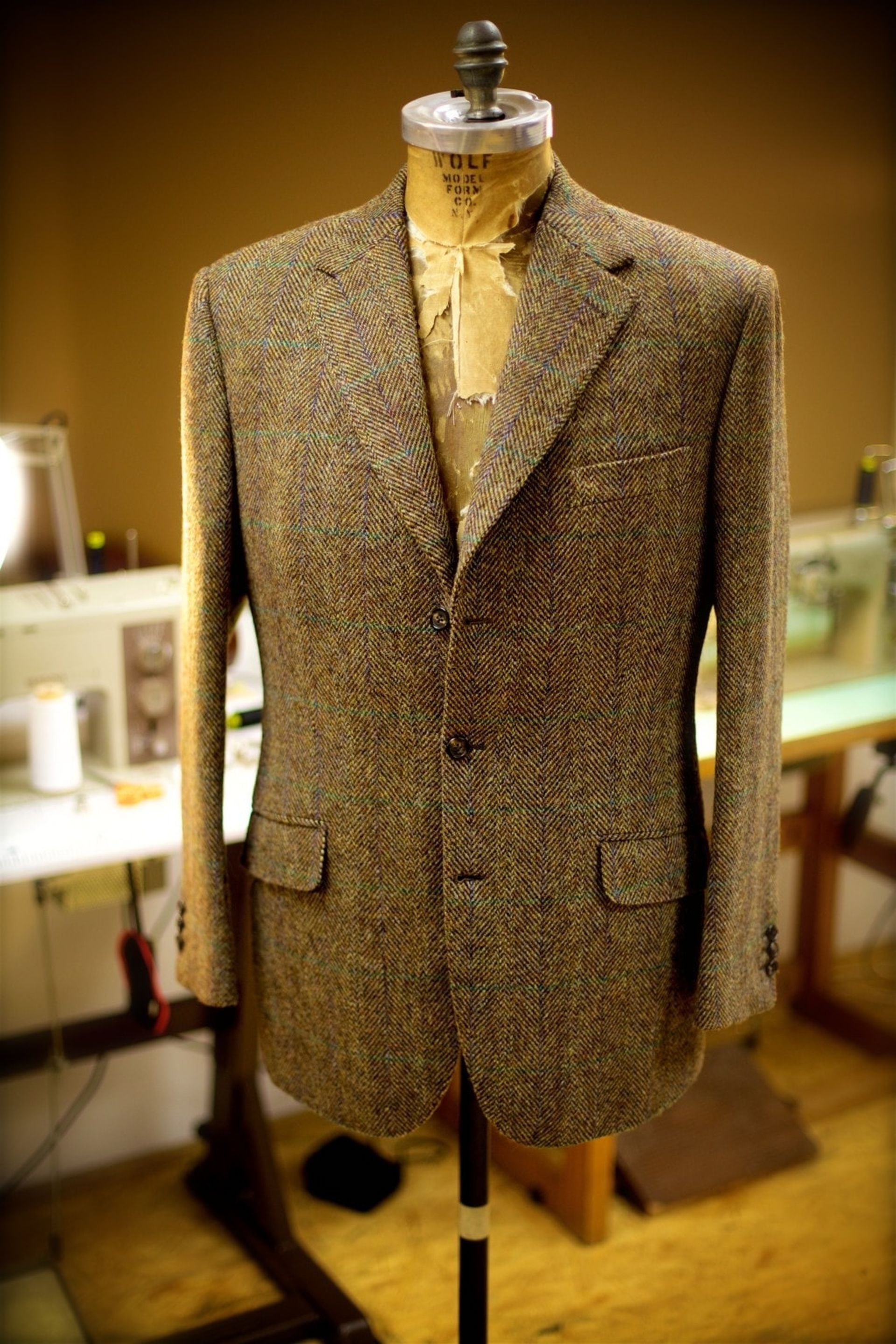Tweed, that quintessential British cloth redolent of country pursuits and aristocratic estates; think Downton Abbey. Well yes, we all know that, but what is tweed? Where did it originate and why has it kept its place in British style and fashion through the decades? To answer some of these mystical questions, we turned to Budapest’s London trained bespoke tailor, Simon Skottowe.
Originally called tweel, legend says that due to the mistake of a London cloth merchant this ancient country fabric was renamed tweed. Actually tweed is the name of one of Scotland’s most famous rivers and this is how the misunderstanding occurred. These days most of the finer tweed qualities are still made in the Tweed river region. The special minerals found in the river and it’s very soft water make it ideal for finishing high quality cloth.
Historically made for use in the country, for shepherds and farm workers, it has properties which make it ideal for outdoor pursuits. Hard wearing, water repellent and excellent insulator. The characteristics of each regions tweed depends to a great degree on the local climate as this effects the grade of the locally produced wool. Hence Harris tweed from the windswept Outer Hebrides islands, has a coarser feel, while those of more clement regions have a softer handle. Modern tweeds also combine cashmere and other finer grade fleeces that produce very luxurious qualities.
The most important characteristic of tweed is that the wool fleeces are dyed and dried before the various shades are blended and carded together before the actual yarn is spun. Then when woven this produces a cloth with a multitude of hues. Whether woven in a plain, twill or herringbone structure these, the most classic tweed patterns, recall the natural colours of the Scottish countryside.
The popularity of tweed fabric took off in the middle of the 19th century. Prince Albert bought the Balmoral estate in 1848 and Queen Victoria fell in love with Scotland. All of a sudden everything Scottish became fashionable. Consequently „Keeping up with the Jones” meant owning a Scottish estate and many money-strapped Lairds sold off the lands to rich English aristocrats. From ancient times each clan, or family, in Scotland wore their own tartan, something that the English interlopers where not allowed to do. So to mimic the local culture estate tweeds were created to be worn exclusively by the gamekeepers and staff of a particular property. It was Miss Balfour of Glen Feshie who designed the first estate check by adding a red over check to the basic black and white shepherds check, and thus, differentiate her staff from the local hoi polloi. The enormous variety of tweed patterns toady is thanks to the estate checks, most of which can now be worn by any one, and are no longer exclusive to a particular estate.
Tweed is a deceptively tricky fabric to tailor. Very often the jackets lose their shape and take on a rather sack like appearance. Fortunately the experts in Savile Row have found a solution even to this issue. The tailor actually slightly over shapes the jacket during its construction to compensate for the inevitable relaxation that will occur with wearing. Also more stabilizing internals are included to control the shape.
I actually prefer tweeds with over checks, from small to enormous and multi coloured. Whether it be a classic three piece hunting outfit, a vibrant city jacket or a heavy winter coat, the challenge of matching the check pattern while creating a beautiful shape is truly satisfying.
Even after nearly 200 years since it was taken up by the British upper classes Tweed still maintains its aristocratic charm. While tweed is sometimes back in fashion, it is never out of fashion, and an enduring link to a stylish past. As seen in Diplomacy and Trade magazine.
Tweed jackets can be nicely combined with a pair of elegant trousers. For example with these beautiful wool-flannel trousers.





